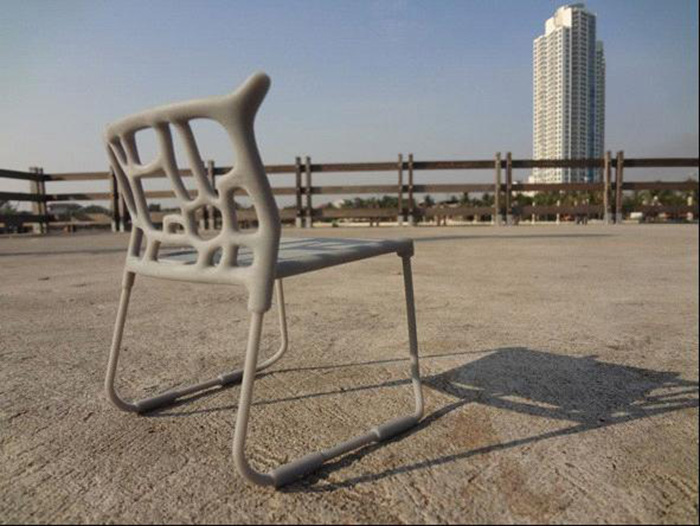A wise man once said that: “the greatest trick the devil ever pulled was convincing the world he didn’t exist.” In post-industrial societies morality, for many, is a code of wealth means health and might means right. The evolved psychological mechanisms that have orientated our behaviour for millennia – such as the personification of evil to objectify antisocial subroutines in our psyche – are currently missing a healthy replacement, and now a ubiquity of surveillance by omnipotent, omniscient technology arises instead of our traditional, all-seeing deities.
Designer Rendy Himawan’s take on the concept of the devil is that we all have a part of us that wants to be impolite, and perhaps downright evil. He has created a chair based on this very idea and called it the Devil’s Chair: “I attended a class by Prof. Imam Buchori, and he said that design should be able to give a social message to society. With the chair I want to say that we have something bad in us in some way. So, we deserve to sit in this Devil’s Chair, regardless what job we have. Politicians, lawyers, designers, architects, we are a devil in some way.”

3D print shop extraordinaires i.materialise helped the designer in his creative quest by printing a small prototype of the Diavolo chair in prime gray providing Rendy with a real life object he could use to elaborate his final design. The result is a chair with a solid rod wire frame, weaved artificial rattan for a seat, and a back CNCed from Acrylonitrile Butadiene Styrene (ABS) plastic.
The chair Himawan designed was presented at the Biennale Desain & Kriya in Jakarta, Indonesia, last month, where it was shown amidst a selection of fashion, architecture and other furniture.

Rendy’s take complete, his work, or more specifically, the aim of his work, has prompted some thoughts …. as it was intended to:
As existing incarnations of Western monotheistic religions now clash in the global village, where technology – particularly new modes of global communication – has created a platform for previously disparate civilizations to meet in debate, fringe elements of religions now mutate messages of peace into violence. Fascinatingly, the small Abrahamic religion of Baha’i sports a founder that propagated an ethos that all religions are one in a far-sighted perspective over 150 years ago in Iran. Will the year 2100 see a unified world religion; a group of religions with an enlightened view of mutual respect; or will religion be replaced by transhumanism?
The era of religious terrorism may well be the generation-long war that analysts predict, given that religions evolved to be absolutist in perspective: a shared world view that originally created social cohesion in disparate cultures distanced by environments, innate in our psyche. Still, education, not drone warfare and invasions of nation after nation by military superpowers, is the oft overlooked answer: The military industrial complex has much profit indeed to gain from an ethos of war, and Western Powers have a position of primacy to seek to maintain in the face of a rising China and the near future clash that both bilateral poles genuinely wish to avoid.
As The Central African Republic becomes the latest casualty of religious wars, descending into the chaos we have seen everywhere from Afghanistan to Pakistan, Iraq to Indonesia, Syria to Algeria, Niger to Nigeria, the fall of religion into a force of violence rather than peace is a tragically inevitable reaction to globalization: one that world powers could err on the side of caution regarding, rather than being quite so keen to maximize business opportunities via what some term disaster capitalism. The black blood of oil may well be remembered in a 2100 post-hydrocarbon world as being the devil’s deliverer far more than clashes of cultures?
The socially transformative potential of home 3D printing has the potential to decrease the poverty, which creates the desperation and anger manipulated by those who mutate peaceful religions into violence. The possession of the means of production by the individual, (alongside the capitalist, and perhaps in certain sectors such as healthcare, the state?) may spread the sense of personal production power that is the very antithesis of the worldly despair extremists thrive upon by turning ancient wise words of scripture into the flute of the devil…


